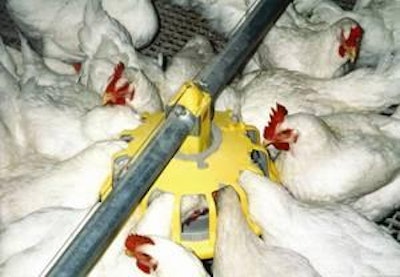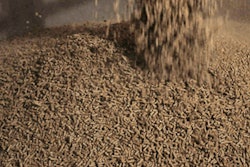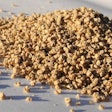
Is more feeder space per bird necessarily a good thing? This question is posed by Dr. John Brake, poultry science professor, North Carolina State University.
Brake and fellow researchers have been looking at feeder space and how it can be associated with performance issues in male and female broiler breeders.
Speaking at the North Carolina Broiler Breeder and Hatchery Management Conference, Brake explained the important role that feeder space per bird plays in the amount of feed that individual birds consume and how this impacts both the performance of the breeder flock and the offspring.
Pen trials involve space
Brake and his colleagues have conducted a number of pen trials to test the impact of feeder space on breeder performance. In one study, birds were raised with either 2.8 or 4.2 inches per bird of feeder space in the pullet house and either 4.1 or 2.4 inches per bird in the laying house.
Primary breeders typically recommend around 6 inches of feeder space per bird.
In Brake’s research, the best laying performance and livability were obtained by the group of birds grown on 4.2 and 4.1 inches per bird of feeder space in the pullet and layer houses, respectively (Table 1). The next best performing group was the birds raised on 2.8 inches of feeder space per bird and kept in the laying house on 2.4 inches per bird.
Increasing feeder space from pullet house to layer house and cutting the feeder space from pullet house to layer house gave equally bad performance in the layer house.
Dr. Brake said that having a uniform amount of feeder space in both the growing and laying houses gives the best performance. Normally in U.S. production houses, feeder space slightly increases for both males and females going from the growing house to the layer house.
Competition is a good thing
“Crowding the birds on the feeders is the right thing to do,” Brake said. Competition for feeder space helps to spread the feed out amongst the birds. The positive effects of this competition carry over into bird performance in the broiler house. In a study conducted at North Carolina State University, the smallest broilers came from the breeder flock that was raised on 2.8 inches of feeder space per bird and kept in the laying house at 4.1 inches of feeder space per bird (Table 2). The largest weight broilers came from the flock raised on 4.2 inches per bird in the pullet house and 4.1 inches per bird in the layer house.
Brake said that these weight differences, as much as a quarter of a pound per bird, have been reproduced in commercial broiler flocks.
Big breeders make big broilers
“Crowding the birds keeps the big girls and the big boys producing eggs and semen,” Brake said. You want the big roosters and big hens to produce as many fertile eggs as possible because their superior growth rate will be passed on to their offspring. If the smaller breeders lay more eggs, you wind up with more small broilers.
In another study, breeders were raised in the pullet house with either 6.4 or 4.3 inches of feeder space per bird. At 15 weeks of age, the female breeders were separated into three groups by size, small medium and large. The performance of the birds was then tracked throughout the laying cycle.
Providing more feeder space to small birds increased the number of eggs they laid (Table 3). Increased feeder space decreased the number of eggs produced by both the large and medium sized birds.
Overeating by some birds
Brake said that extra feeder space, which might be defined as feeder space which is not occupied by a bird’s head when it is feeding time, will let some birds eat too much feed. Eating too much will allow for these birds to grow more breast meat and get heavier. He said that big-breasted birds don’t get up and down as easily and don’t use the nests as much, so they lay more floor eggs. More floor eggs mean fewer big broilers.
“Fewer floor eggs were evident in houses where feeder space was severely limited,” Brake said.
Uniformity of feed intake
Brake said that he is more concerned about uniformity of feed intake than about uniformity of body weight. Because of genetic differences, uniform feed consumption per bird will necessarily result in variation in bird size.
Competition at the feeder in the breeder house is a good thing, according to Brake. He said that more feeder space means less crowding and competition which yield more small broilers. It is important, Brake said, for breeder managers to pay attention to not just the bottom line performance in the breeder house but also performance of the progeny in the broiler house. Breeders get more exercise because of competition for feed space, so you have to feed them a little bit more which will cost a little more in the breeder house but will save money in the broiler house. Ultimately, an integrated poultry company’s final product is not fertile eggs or chicks but meat. The impact of management in the breeder house can be felt far beyond the hatchery.
“Remember to listen to your chickens, they don’t read the manuals,” Brake said.







